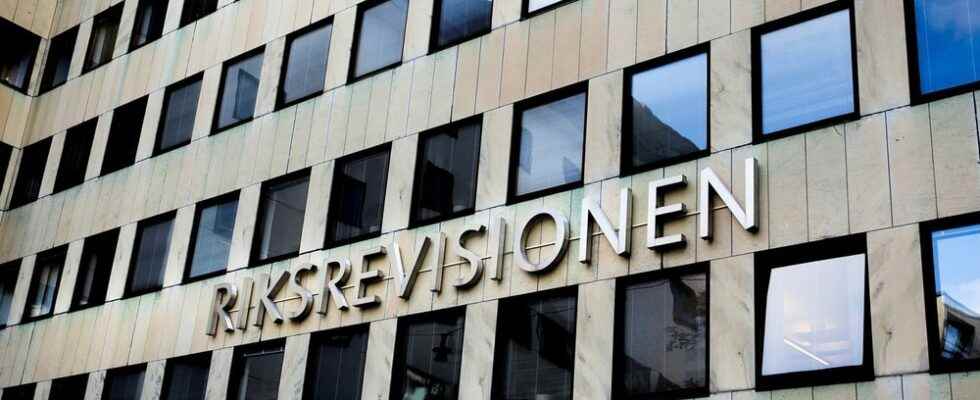Ever since the free school reform was pushed through 30 years ago, the system of school fees has been questioned. This means that each student must bring the same amount of money to the school of their choice, regardless of whether it is municipal or independent.
The idea was that the system would promote equality. But there are many indications that it instead increases the differences between students and schools.
A few weeks ago, the government proposed that the municipalities should be able to reduce the compensation to independent schools because they do not have the same responsibilities and costs.
But the proposal was voted down by the opposition, among other things with reference to the fact that they wanted to wait for the review of school fees that the National Audit Office announced and which will be presented on Thursday.
In it, the National Audit Office directs strong criticism of the current system, precisely because the compensation for independent schools is calculated in the same way as for the municipal ones.
The municipal schools have a responsibility to receive all students, sometimes at very short notice, which entails costs that the independent schools do not have. This means that the system is not equivalent, but strikes unfairly on students in municipal schools, according to the National Audit Office.
The authority proposes that the system with school fees be replaced by a national calculation model that determines the amounts to be paid to independent schools.
– We do not propose that it should be the same amount for all independent schools, but a model for how the calculations should be made so that it can vary based on different aspects, says Audit Director Sofia Sandgren Massih to DN.
A free school in the countryside should thus be able to receive a different amount than a school in a large city because teacher salaries, rental costs and student base vary depending on different circumstances.
– But we see no reason for the compensation to follow the municipal student costs because there are such large differences between what responsibility, and what conditions, the municipal and independent schools have, says Sofia Sandgren Massih and takes an example:
Say that a municipality has 34 students in year 4 who want to go to a municipal school.
Then it can either divide them into two classes with 17 students in each – which in most municipalities would be financially unprofitable considering, among other things, teacher salaries and local costs.
Or it can have a single class with 34 students, which most people think is too many from a pedagogical perspective.
A free school can, on the other hand, have 34 students in a queue but decide that it only wants to accept 24 students because it is an optimal number for one class – and then let the municipality take care of the remaining ten.
In this way, the municipalities get higher costs while many independent schools have a completely different opportunity to optimize their finances.
Previous governments have been aware of this since the late 1990s, without doing anything about it, according to the review.
An argument that has often been put forward to defend the current system is that the compensation should be equivalent. But this is not a relevant argument, according to the National Audit Office, because it is not the student who receives the money, but the school principal, who is allowed to distribute the money to schools that may be located in other municipalities.
The school groups can also choose to distribute parts of the school fees in profit to the owners.
Another problem with the current one the system is that the municipalities’ tuition fee decisions often come late and are also unclear.
It also varies greatly between municipalities, which DN wrote about earlier. For a student in year eight, the amount in one municipality can be SEK 77,000 and in another SEK 162,000.
This means that the groups often appeal the remuneration.
– Most municipalities we spoke to say that it would be good with a national template so they would not have to bother with this, it would also be easier for the independent principals who have greater opportunities to plan ahead, says Sofia Sandgren Massih.
Is there not a risk that there will be even more appeals?
– I believe it is possible to develop a calculation model that takes into account all aspects that are important, in order to reduce that risk. But the calculation model must be designed in consultation with the municipalities and independent schools, says Sofia Sandgren Massih.
Read more: Big difference between how much each student may cost: “Not legally certain”
The National Audit Office’s proposal
● Introduce a state standard model for compensation to independent schools.
● Review the regulations for permits for new independent schools to establish themselves in a municipality, so that it does not entail significant negative consequences for the schools that already exist in the municipality.
● Make the regulations clear so that the decisions from the Swedish Schools Inspectorate become transparent and comprehensible.
● Develop systematic reviews of the negative long-term consequences that have arisen in connection with new school establishments in municipalities.
● Also develop a template for how the municipalities must report their grant decisions to independent schools so that it becomes comprehensible.
● If the government does not want to introduce a standard model, then introduce a standard compensation for local costs for independent schools.
Show more
